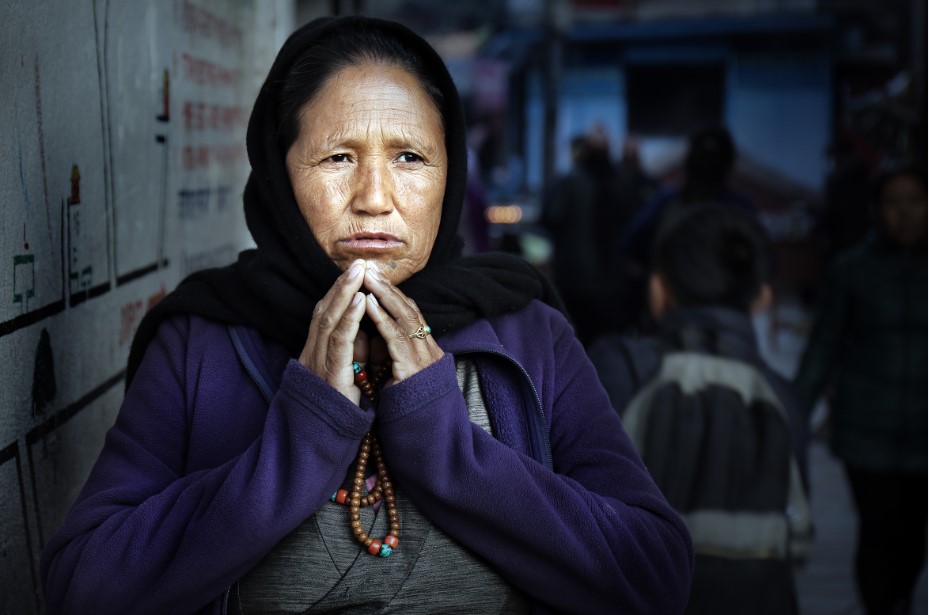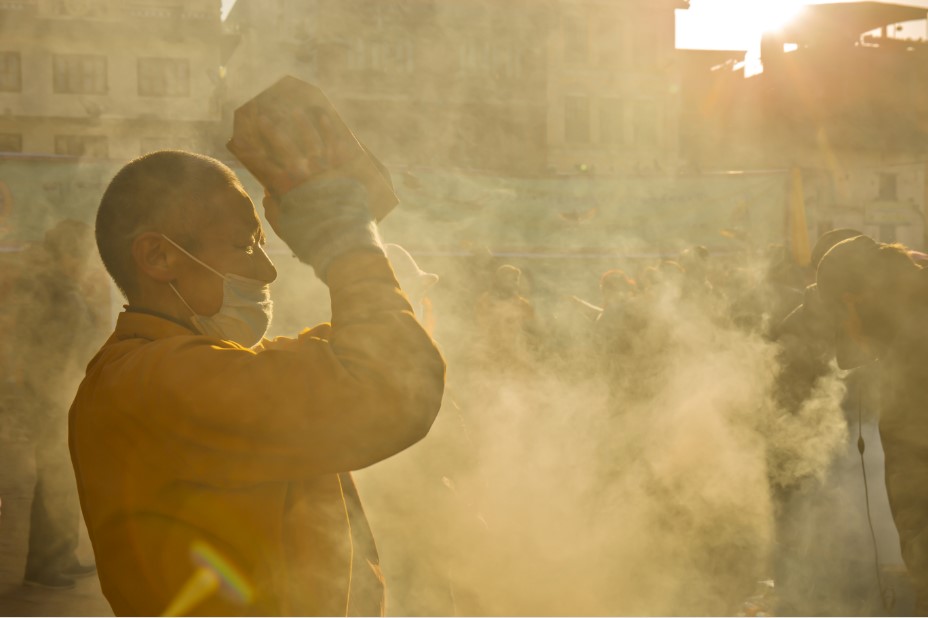Boudha is one of my favorite parts of the city.
I love how Boudha is eternally the same and yet feels different each time I visit. I love the way the changing light plays of the gilt of the stupa when you’re there of an evening. I love to watch the old, circumambulating devotees and the young running amongst the pigeons, the voices haggling in Tibetan over piles of spices and jars of goods that I don’t know the names of. Sacks filled with twigs, grasses, and seeds, or so it looks to me. Hunks of butter. Rolls of noodles. Perhaps one day I might ask what certain things are called, but perhaps not. In this part of town, so different from the areas of Kathmandu I frequent on a day-to-day basis, I like the mystery, the not knowing. It feels like a foreign country here, and in a way, it is.


The color of the sky on any given day can change the way the whole picture looks, and some days, that’s just what it feels like: a living, breathing piece of art. I even enjoy watching the tourists, the wonder on their faces as they step into this other-worldly tableau, and how they get swept away in the tide that circles, too.
Everyone seems to walk with purpose here, though if you pay attention, you can see those on the edges of the moving crowd looking up at the holy mound in wonder, awe.
There is food, it seems, everywhere: piles of gleaming khapse, signs offering rooftop stupa views, and menus from a plethora of countries. When I come here, however, I am a creature of habit. I always tell myself I will try new places, and occasionally, I do. Mostly though, I end up at a slightly grimy table in my preferred Tibetan-Chinese hybrid eatery down a narrow alley that leads off the main circle.
If I sit in the back, I can hear food being chopped, the sizzle of vegetables as they hit the hot oil in the cooking area I never see. If, instead, I snag a table at the front the kitchen, the sounds are fainter, but I can watch the people as they move swiftly back and forth on the path in front.
People watching is a great activity in Boudha. You can always tell the newer arrivals from the north: their faces chapped, expressions slightly dazed. Folks wear some amazing headgear here—truly eye- catching hats, red wool and semi-precious stones woven with black hair in an arresting contrast, men and women both. A pair of fluorescent orange running shoes on the feet of a maroon-robed monk leaving the restaurant. An elderly Tibetan lady, dressed traditionally, except for a small canvas FC Barcelona knapsack on her back. There is always something to see. and despite the bustle, there’s always a strange peace here.
Boudha, the Stupa eternal.










